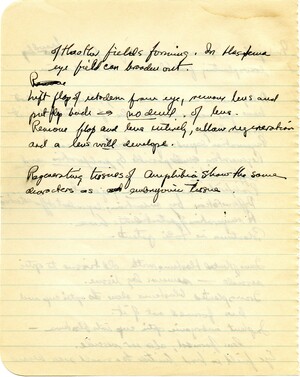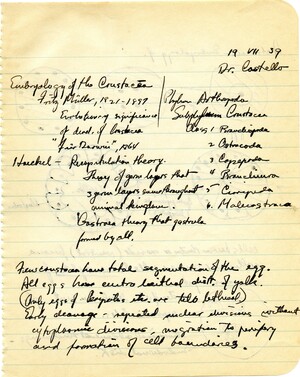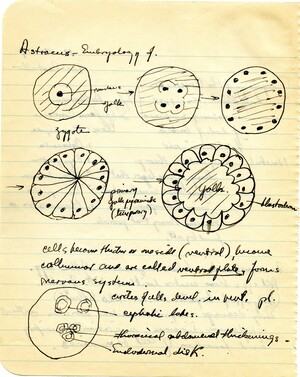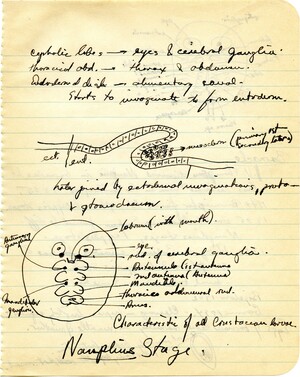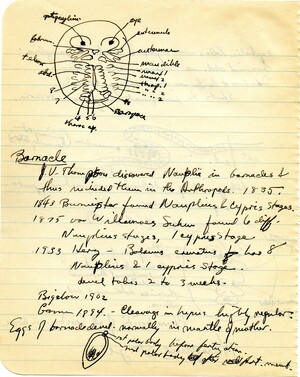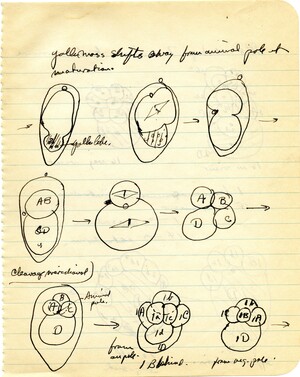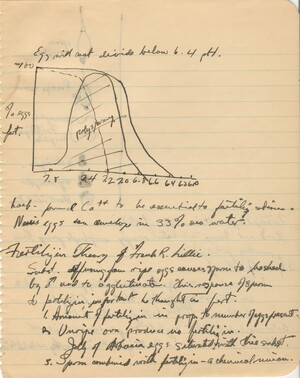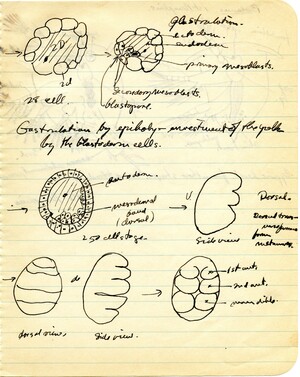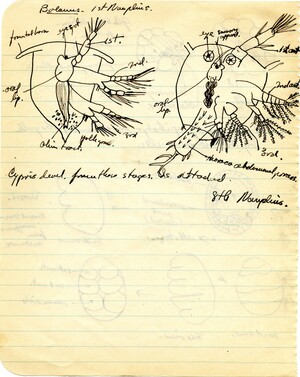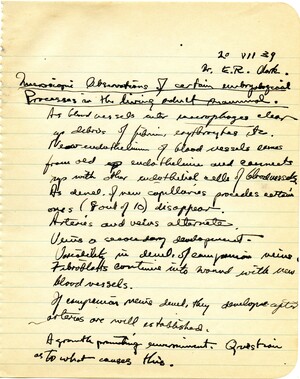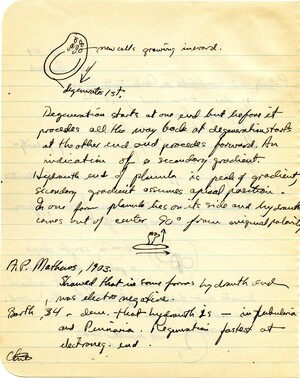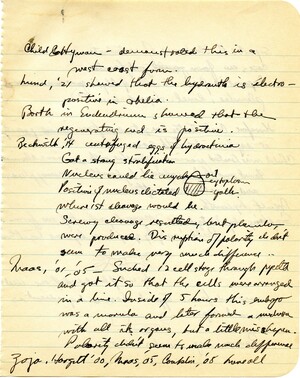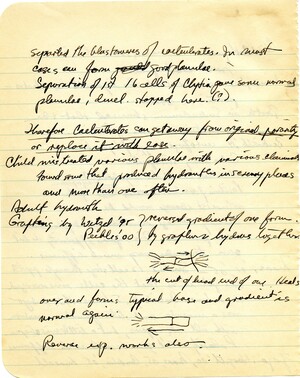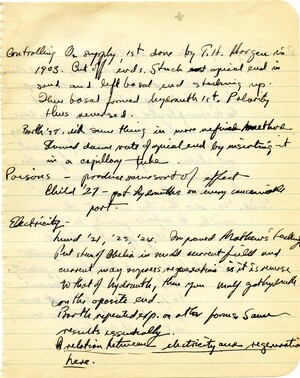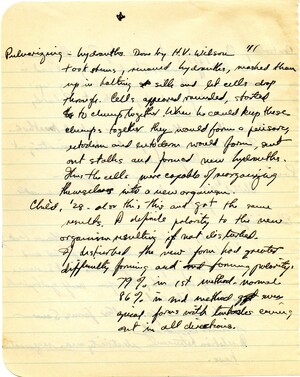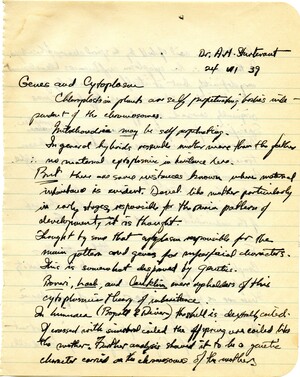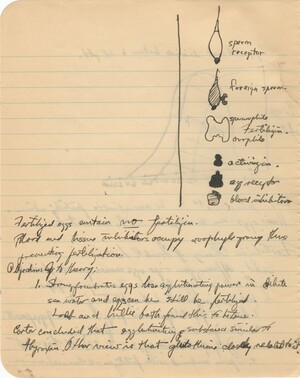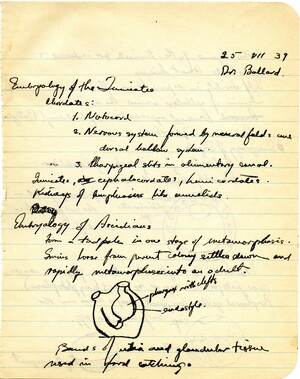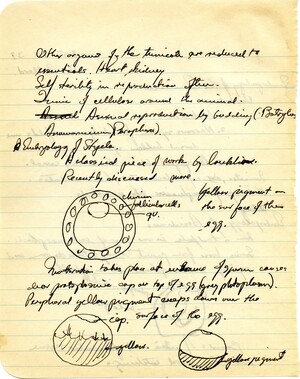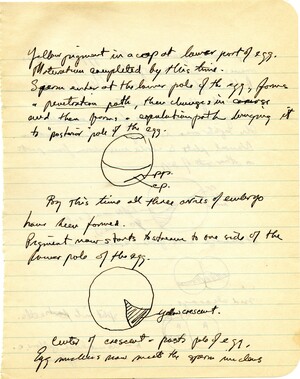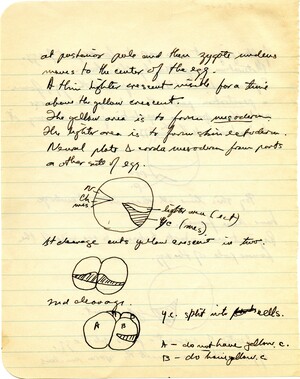Photographs
Notes from O. Schotte's lecture. Trinkaus concludes his notes on regeneration with information on a regeneration experiment on the lens, and in Amphibians
Notes from Donald Costello's lecture. Trinkaus begins with notes on the history of research on the embryology of crustacea, including Mueller and Haeckel, including a small phylogeny of crustaceans, and some notes on the general embryology of the clade
Notes from Donald Costello's lecture. Trinkaus takes notes on "Astracus--Embryology of." with a series of diagrams from the zygote to several cell stage
Notes from Donald Costello's lecture. Trinkaus continues his notes on the embryology of crustaceans with information on the derivatives of various parts of the embryo, a diagram on ectodermal invagination, and a diagram on the anatomy of crustacean larvae
Notes from Donald Costello's lecture. Trinkaus creates another diagram of the anatomy of the crustacean embryo, then begins a section on research on the "Barnacle" (with diagram)
Notes from Donald Costello's lecture. Trinkaus draws a series of diagrams on the development of the barnacle embryo
Notes from Donald Costello's lecture. Trinkaus continues from the previous page with his series of diagrams on the development of the barnacle embryo, including information on the cell lineage
Notes from Donald Costello's lecture. Trinkaus draws a graph of "polyspermy" with pH (x-axis) and "% eggs fert." (y-axis), then begins a section on "Fertilization Theory of Frank R. Lillie" with 3 points
Notes from Donald Costello's lecture. Trinkaus continues from the previous two pages with his series of diagrams on the development of the barnacle embryo, including information on the cell lineage
Notes from Donald Costello's lecture. Trinkaus concludes his series of diagrams on the development of the barnacle embryo (beginning on page 48), with two late stage/adult barnacle diagrams
Notes from Eliot Clark's lecture. Trinkaus begins his notes with information on "Microscopic observation of certain embryological Processes in the living adult mammal." concerning the circulatory system
Notes from William Ballard's lecture. Trinkaus takes notes on degeneration during growth (includes diagram)
Notes from William Ballard's lecture. Trinkaus takes notes on the work of different researchers, like Child, Beckwith, Maas, Conklin, on on regeneration
Notes from William Ballard's lecture. Trinkaus continues notes on Coelenterates and regneration
Notes from William Ballard's lecture. Trinkaus takes notes on different experiments on regeneration including information on "Poisons" and "Electricity"
Notes from William Ballard's lecture. Trinkaus continues his notes on different experiments with information on "Pulverizing"
Notes from Alfred Sturtevant's lecture. Trinkaus begins his notes on "Genes and Cytpolasm" with background on different theories of inheritance
Notes from Alfred Sturtevant's lecture. Trinkaus takes notes on the role of the cytoplasm in inheritance, and Goldschmidt's research
Notes from Donald Costello's lecture. Trinkaus illustrates elements of Lillie's fertilization theory and includes "Objections to Theory" section
Notes from Alfred Sturtevant's lecture. Trinkaus concludes his notes with a line on Sturtevant's take on Goldschmidt and "But this specificty is due to the chromosomes"
Notes from William Ballard's lecture. Trinkaus begins notes on the "Embryology of the Tunicates" with a list of characteristics, then begins a section on "Embryology of Ascidians" (with a diagram)
Notes from William Ballard's lecture. Trinkaus continues his notes on the embryology of ascidians, then begins a section on "Embryology of Styela" (with three diagrams)
Notes from William Ballard's lecture. Trinkaus continues his notes on the embryology of Styela with information on fertilzation (includes two diagrams)
Notes from William Ballard's lecture. Trinkaus continues his notes on the embryology of Styela with information about cleavage and the formation of the germ layers

